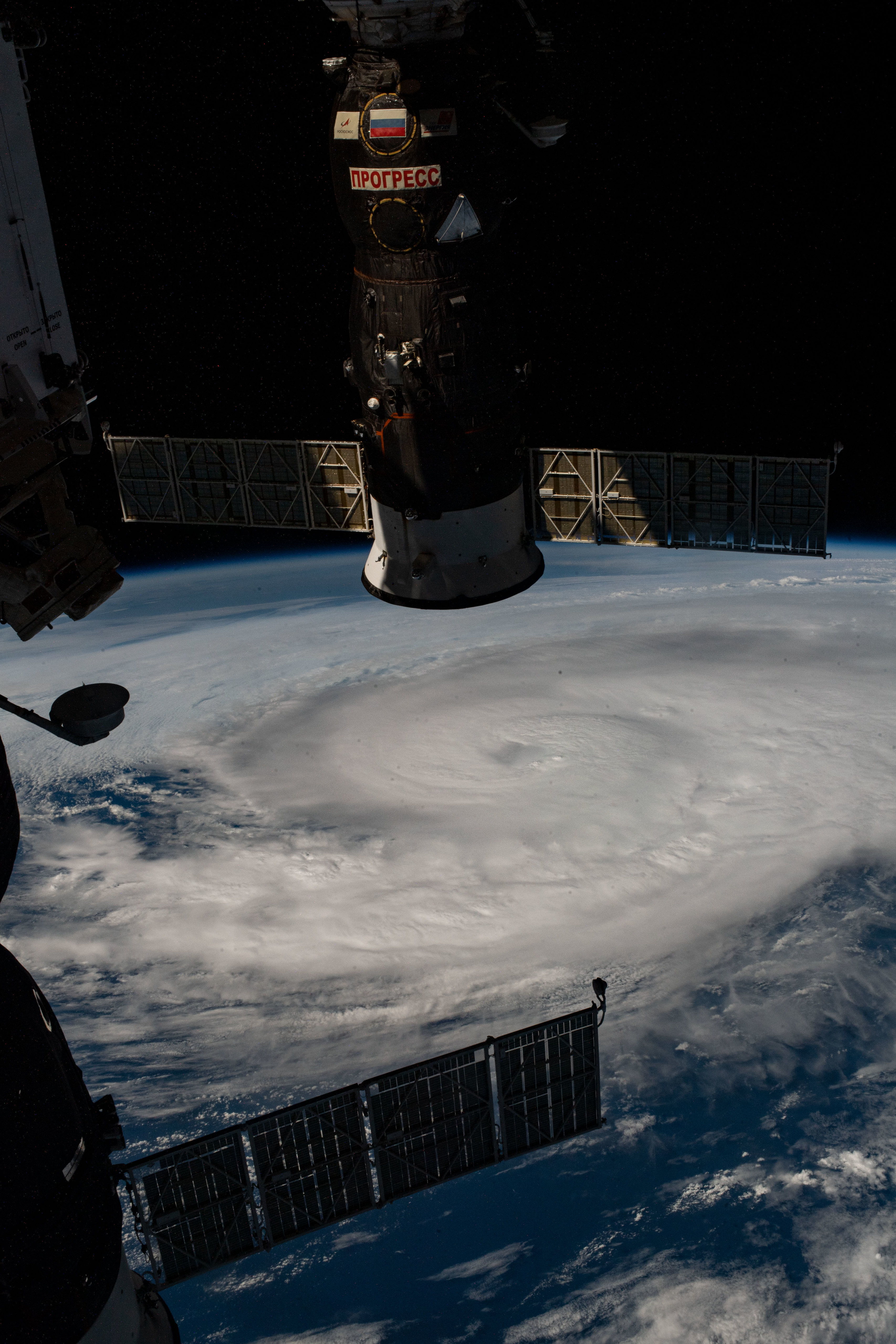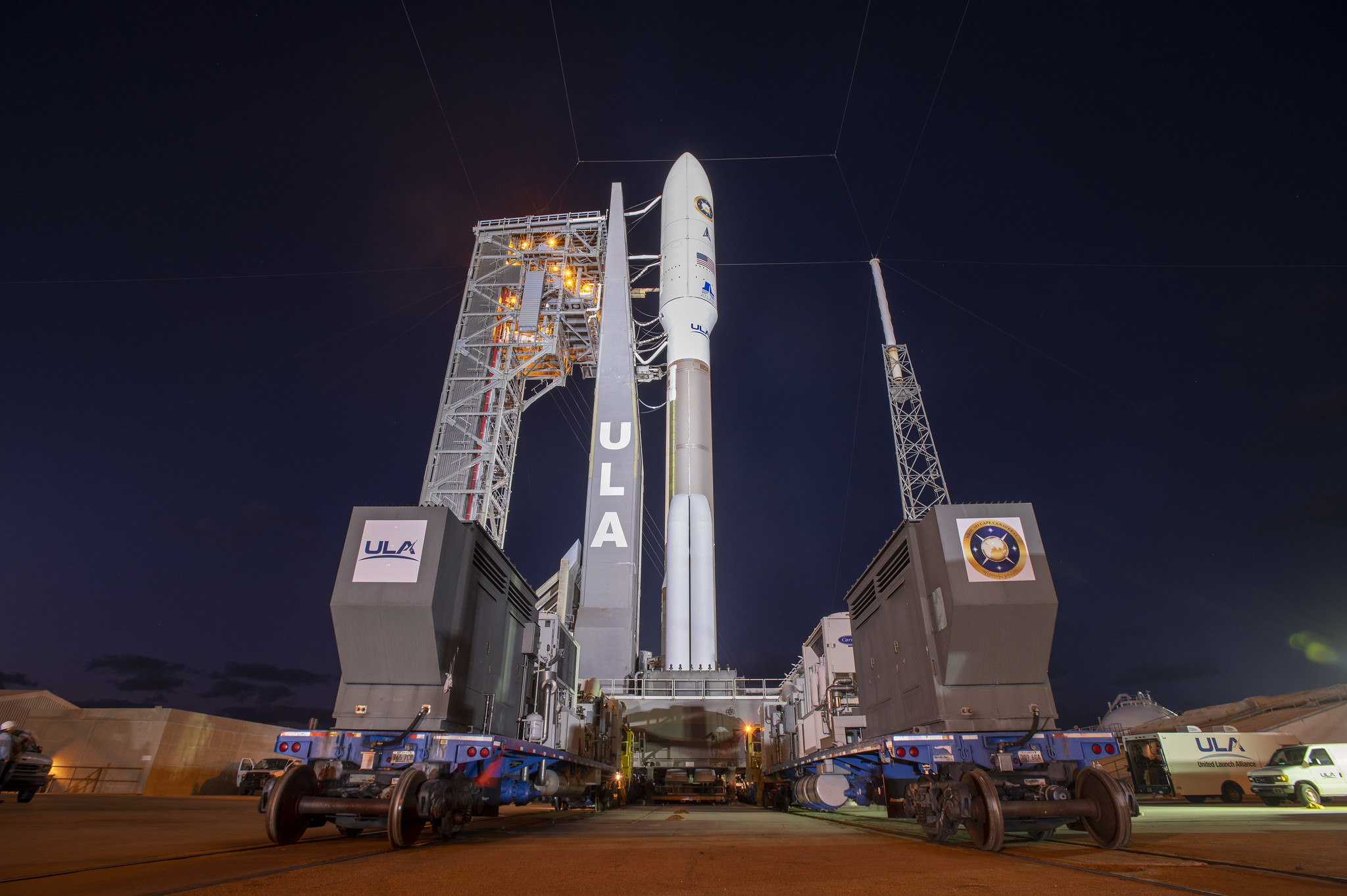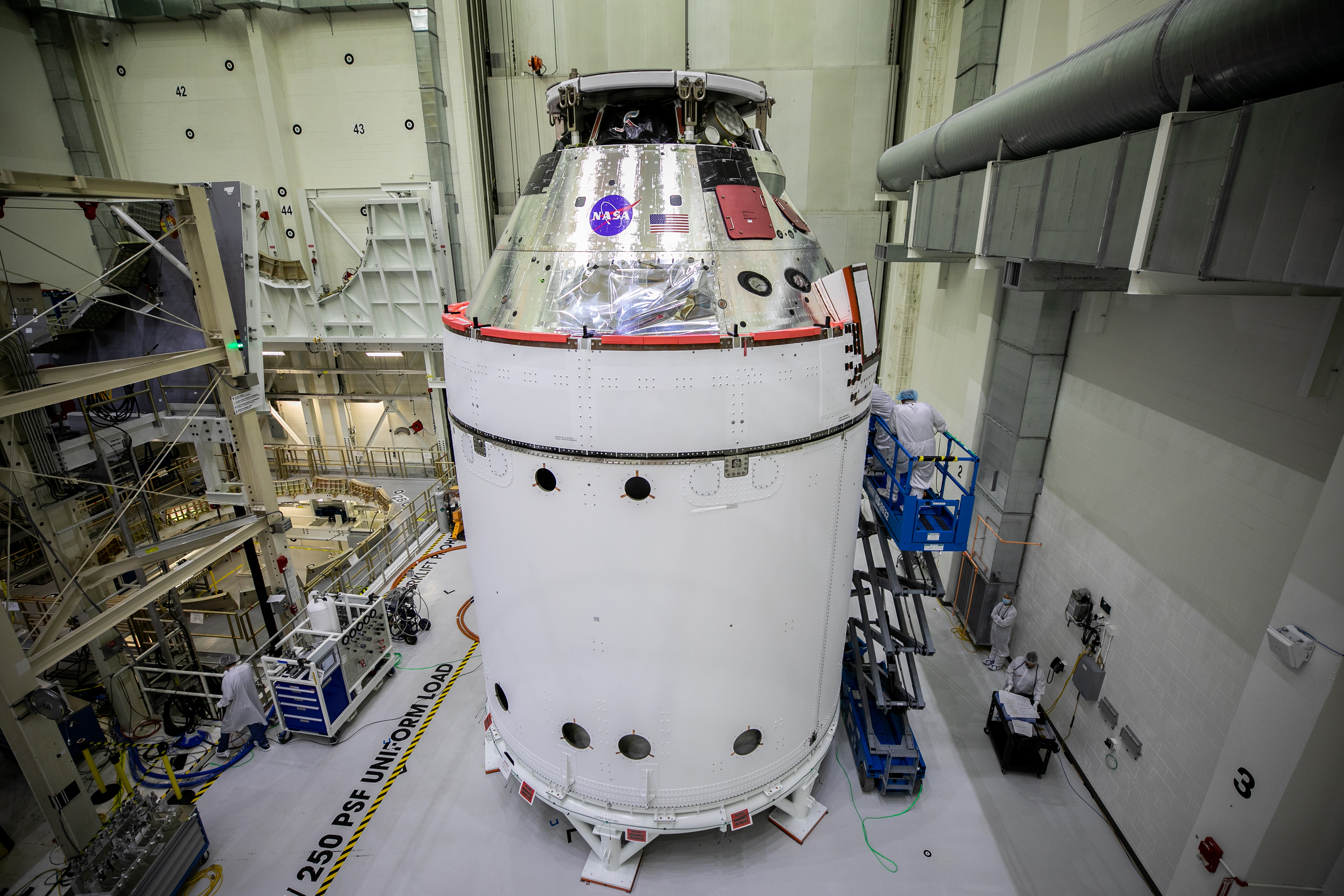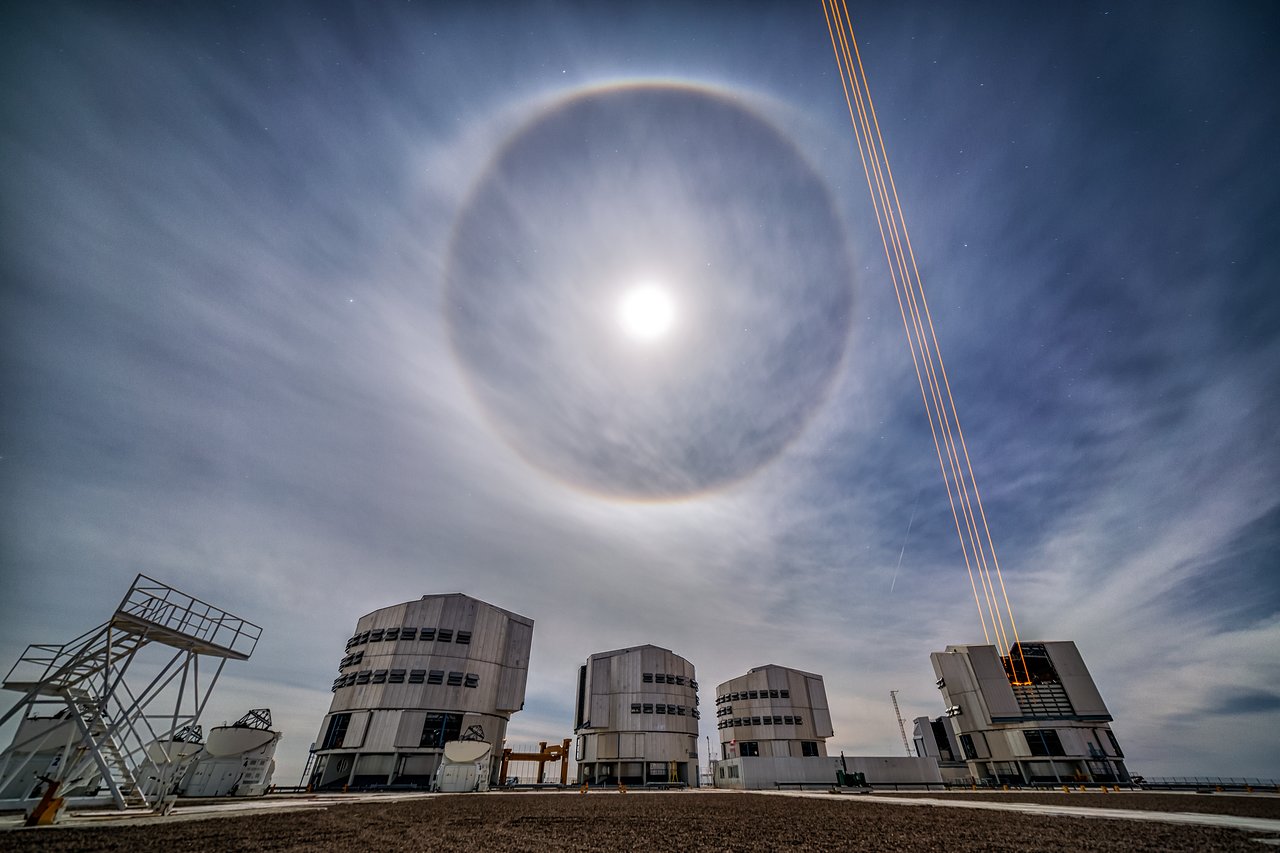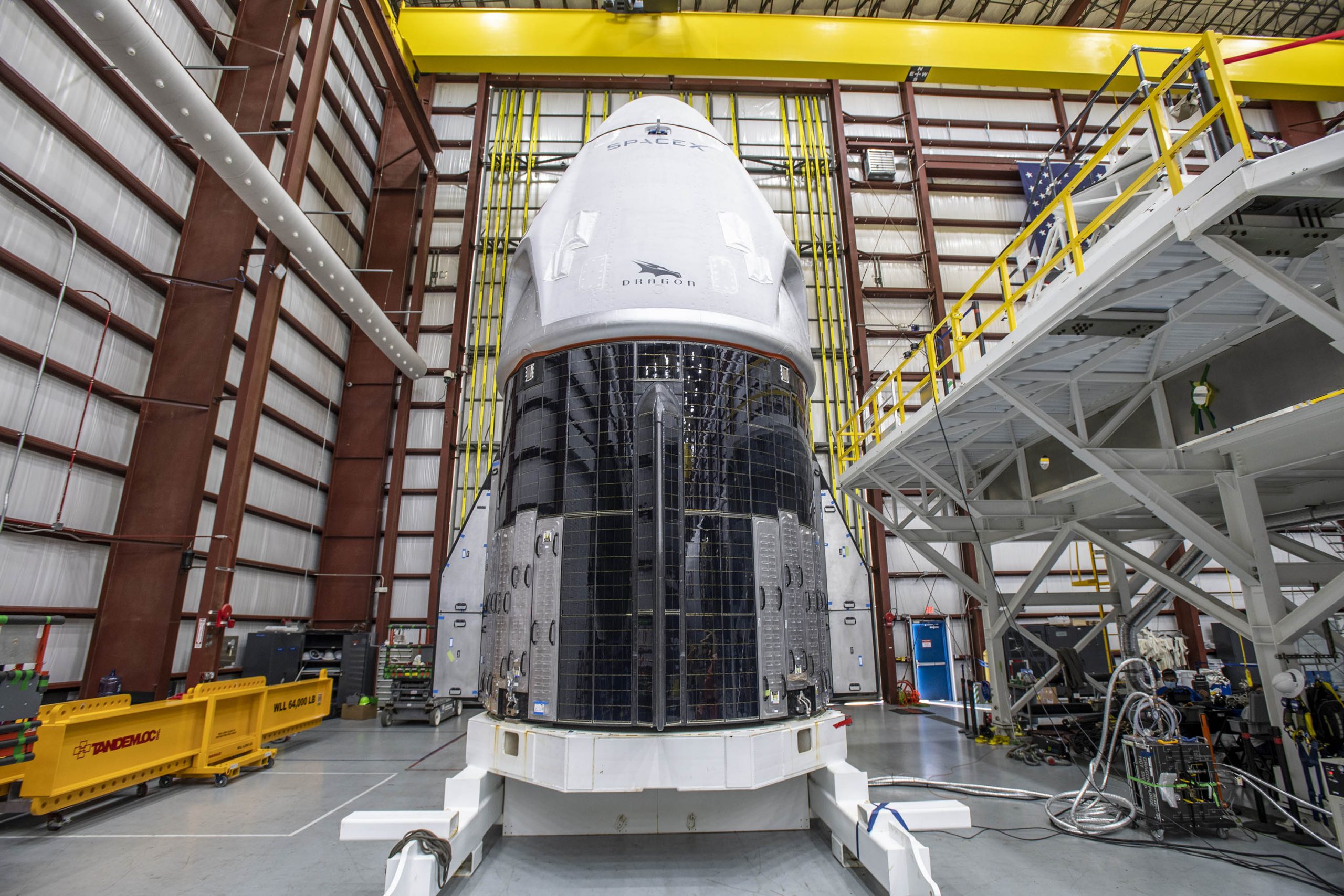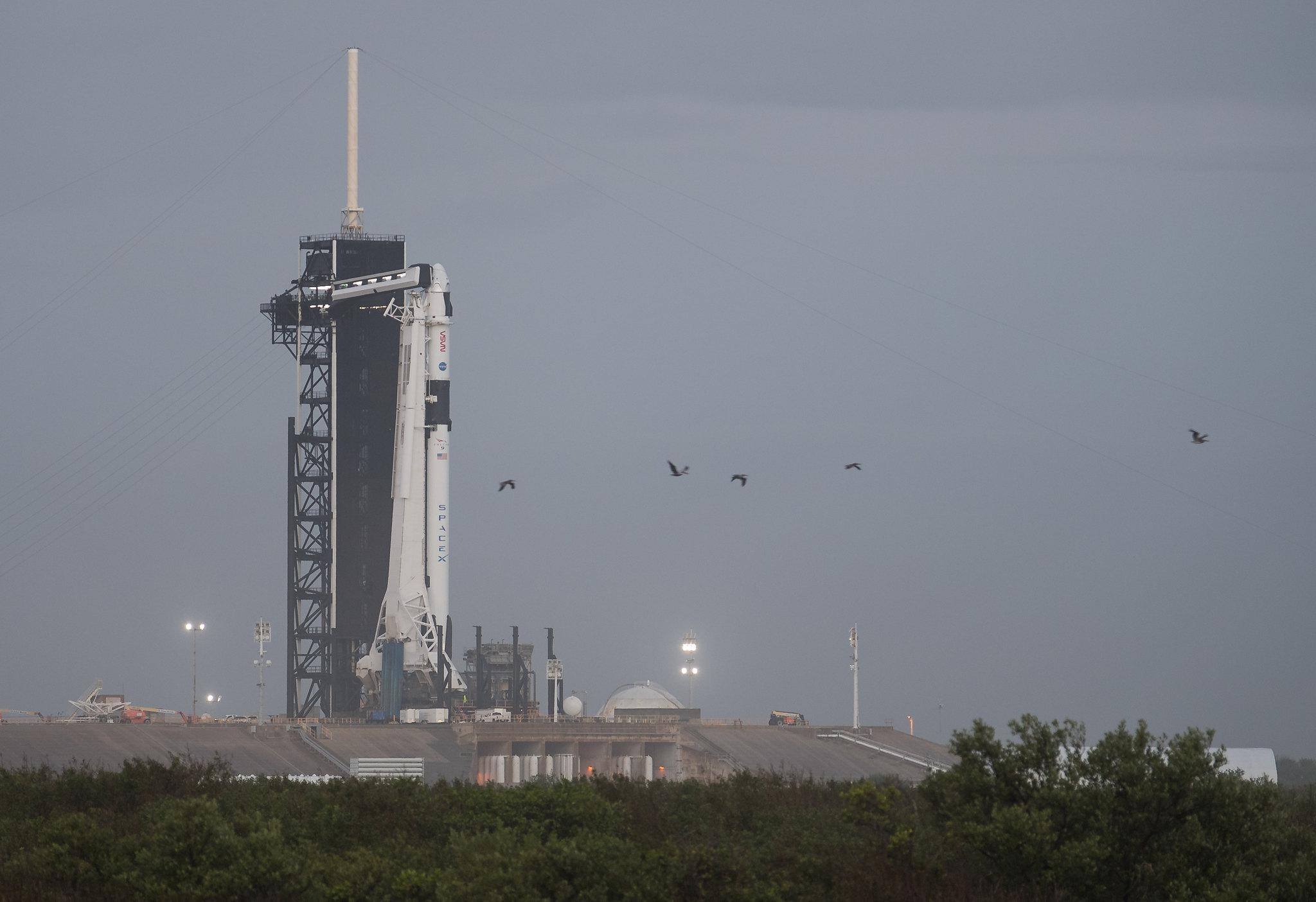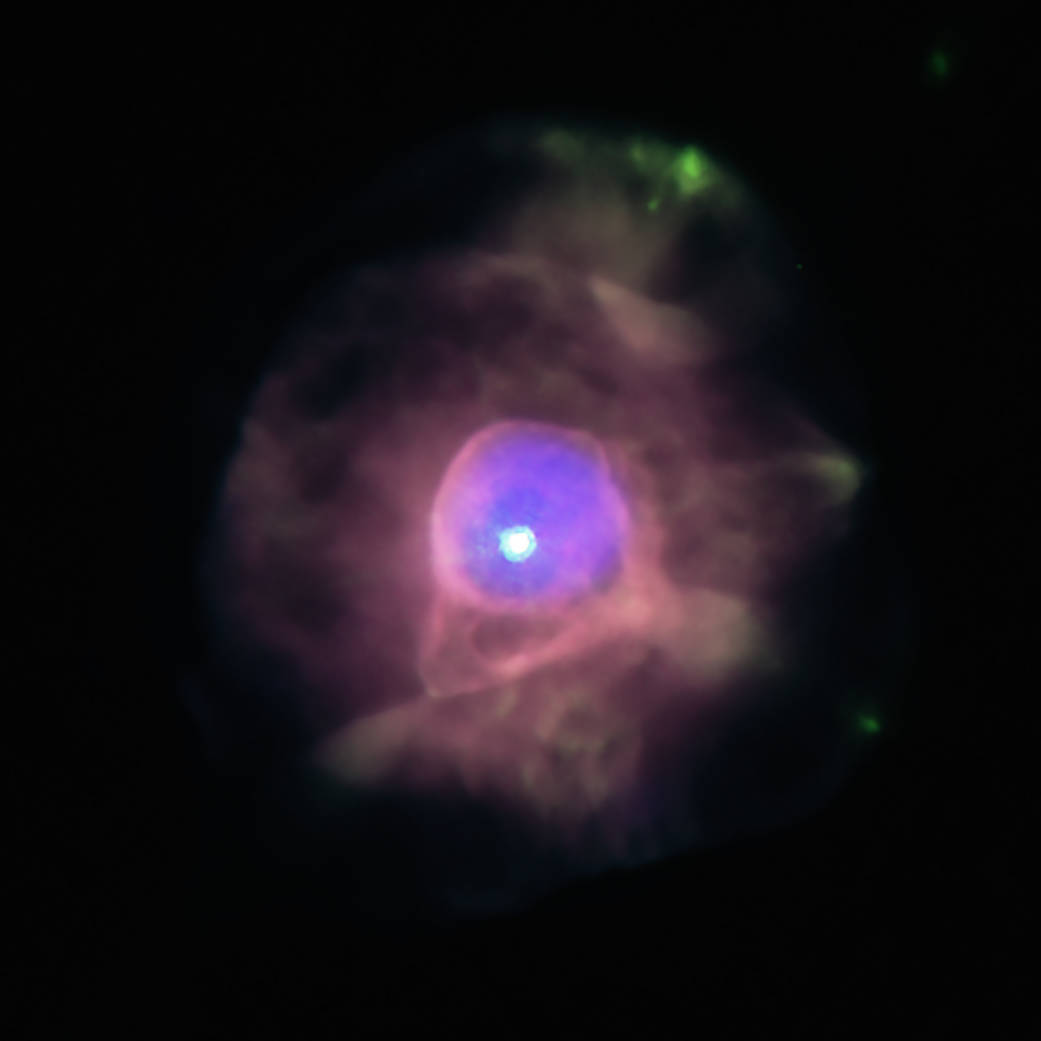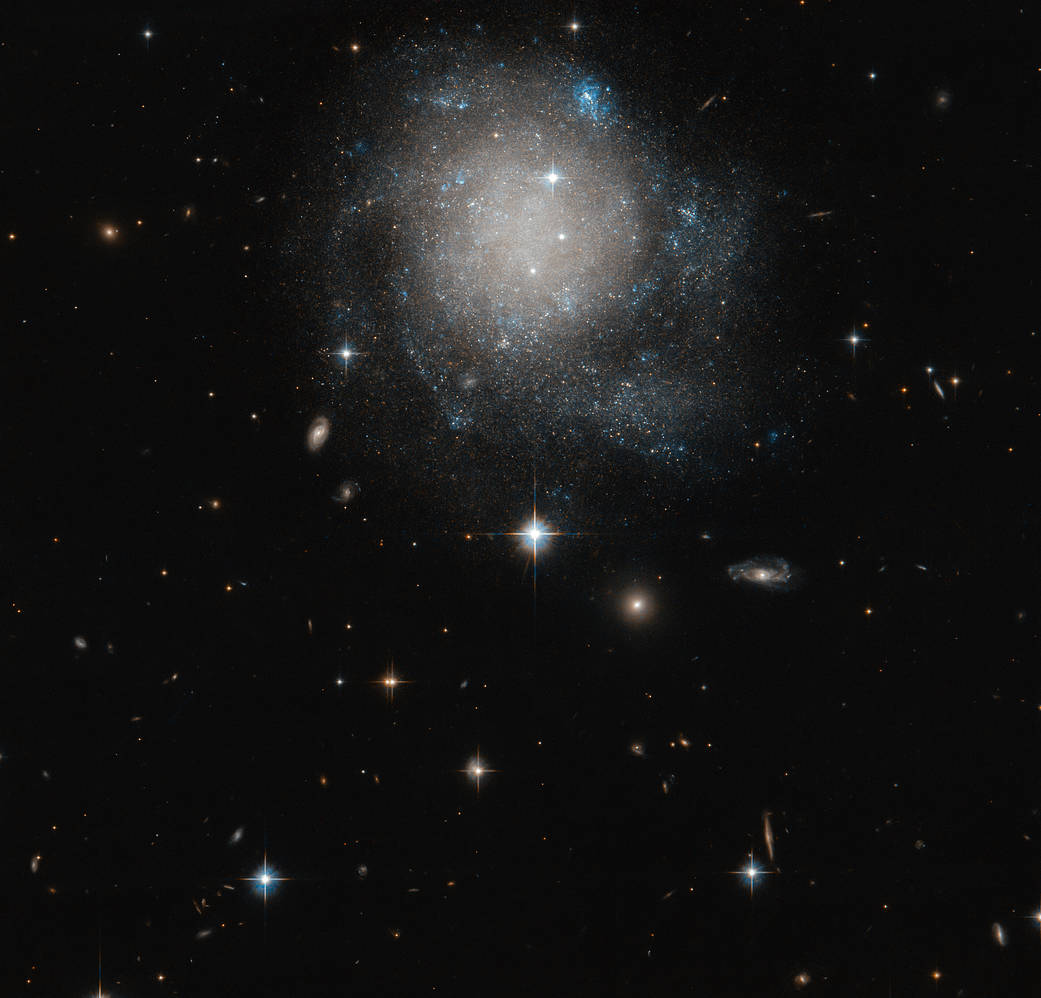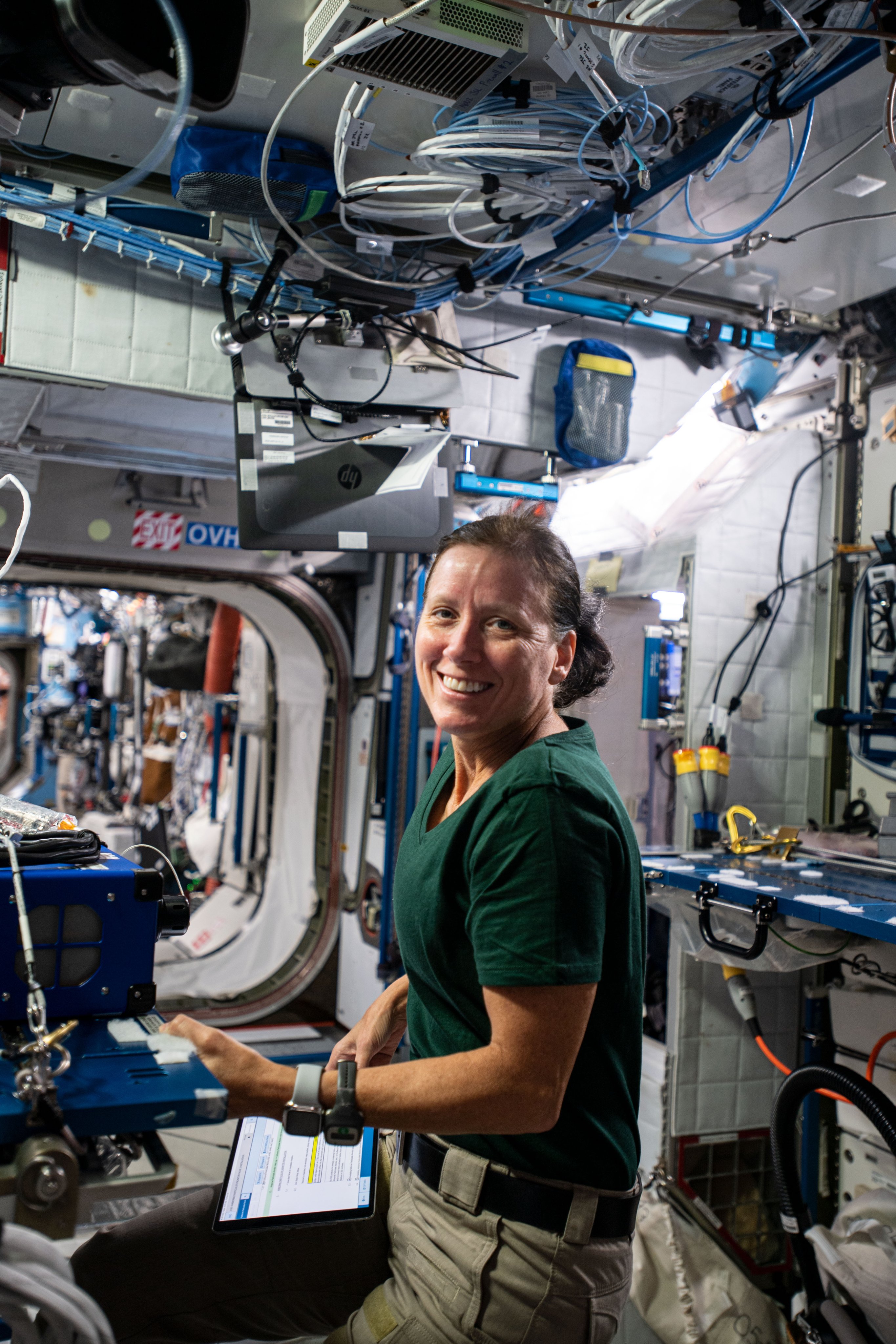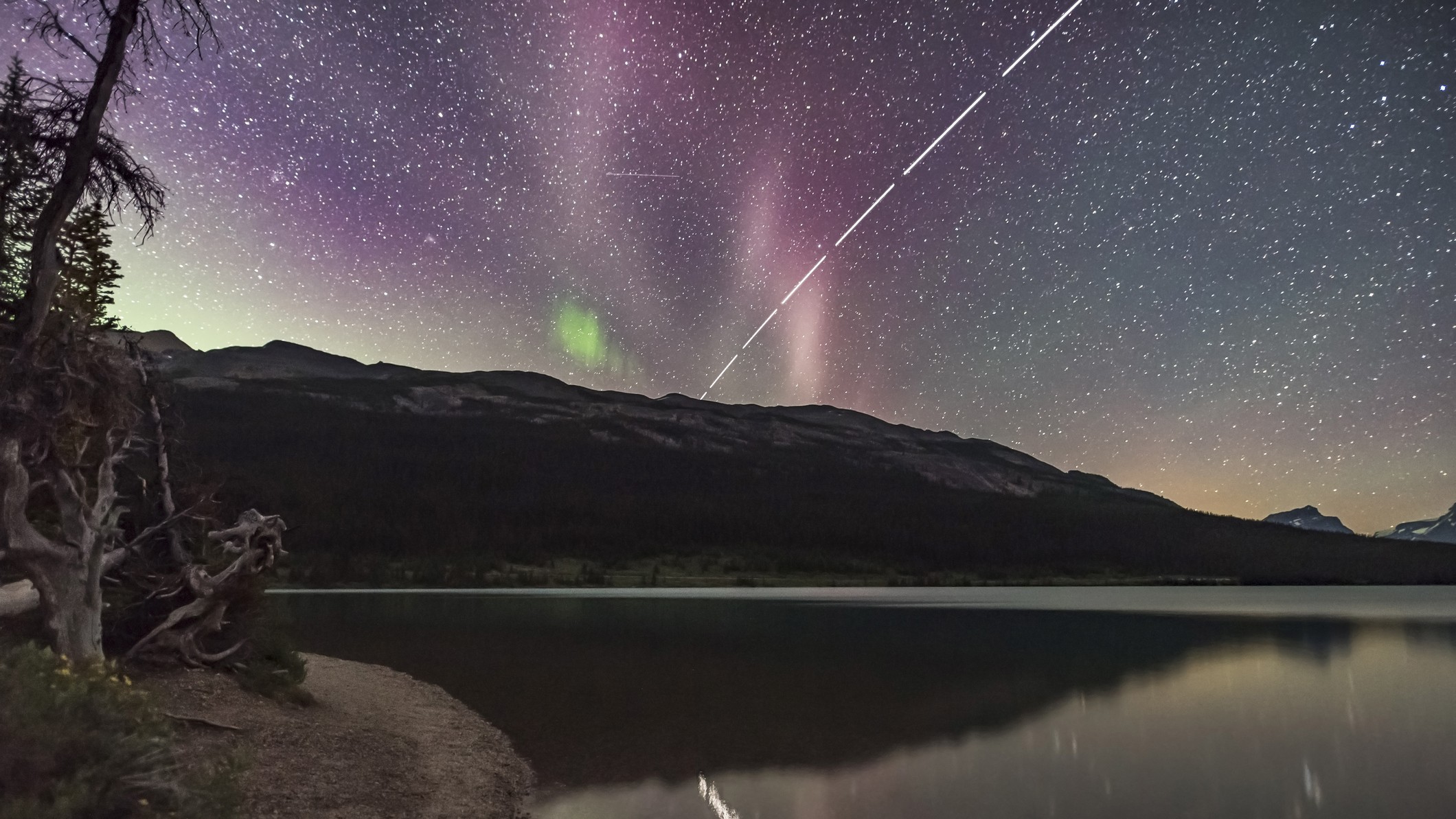Image of the Day 2020 Archive
November 2020
Hurricane Zeta seen from space
Monday, November 2, 2020: Hurricane Zeta churns in the Gulf of Mexico in this view captured from the International Space Station on Wednesday (Oct. 28), as the Category 2 storm approached Louisiana. In the upper foreground of the image is Russia's Progress 76 cargo resupply spacecraft, which is docked to the Russian Pirs module. At the bottom of the frame is Russia's Soyuz MS-17 spacecraft, which brought three crew members to the space station on Oct. 14. — Hanneke Weitering
Election 2020 in Space
Tuesday, November 3, 2020: It's election day on Earth in space, but the only American off Earth right now has already cast her vote in today's 2020 presidential election.
We don't know who NASA astronaut Kate Rubins, shown here at her homemade voting booth on the International Space Station, but we do know how. Astronauts in space during an election have been able to vote from orbit since 1997, when NASA and the Texas election officials laid out a cosmic absentee ballot process for any American caught in space on voting day. Rubins, who launched into space on Oct. 14, cast her ballot on Oct. 22 and shared this view of her polling place.
Atlas V stands ready for launch
Wednesday, November 4, 2020: A United Launch Alliance Atlas V rocket stands ready to launch the NROL-101 mission for the National Reconnaissance Office, on. The mission is scheduled to lift off from Space Launch Complex-41 at Cape Canaveral Air Force Station in Florida today at 5:54 p.m. EST (2254 GMT), and you can watch the launch live here on Space.com. — Hanneke Weitering
Orion gets dressed for launch
Thursday, November 5, 2020: NASA's first Orion spacecraft to visit the moon is gearing up for its historic Artemis 1 launch in 2021. The spacecraft, which consists of a crew capsule built by Lockheed Martin and service module from the European Space Agency, has been wrapped up in its protective three-piece fairing for the upcoming launch.
Artemis 1 will launch the Orion capsule on NASA's first Space Launch System megarocket on a trip around the moon in late 2021. Here's an in depth look at NASA's Artemis program to return humans to the moon by 2024.
A ring around the moon
Friday, November 6, 2020: A lunar "halo" glows like an orb in the night sky above the Very Large Telescope in northern Chile, in this photo by European Southern Observatory astronomer Juan Carlos Muñoz-Mateos. This optical phenomenon occurs when moonlight gets refracted by tiny ice crystals and water droplets in the atmosphere. — Hanneke Weitering
Space Dragon
Monday, November 9, 2020: A new space dragon is born as SpaceX's next Crew Dragon spacecraft to carry astronauts arrives at the Kennedy Space Center's Pad 39A in Cape Canaveral, Florida ahead of a Nov. 14 launch. The spacecraft reached SpaceX's Pad 39A hangar on Nov. 5 after a short trip from its processing facility at the nearby Cape Canaveral Air Force Station.
Breaking space news, the latest updates on rocket launches, skywatching events and more!
The spacecraft will launch four astronauts to the International Space Station for NASA as part of the Crew-1 mission, SpaceX's first operational crewed flight for NASA under the agency's Commercial Crew Program. The Crew-1 astronauts -- NASA's Victor Glover, Mike Hopkins, Shannon Walker and Japan's Soichi Noguchi -- arrived at the launch site on Sunday.
Live updates: SpaceX's Crew-1 astronaut launch for NASA
Crew Dragon on the launch pad
Tuesday, November 10, 2020: SpaceX's Crew Dragon spacecraft and Falcon 9 rocket stand ready to launch NASA's Crew-1 mission to the International Space Station. The rocket went vertical on the pad at Kennedy Space Center's Launch Complex 39A in Cape Canaveral, Florida, early this morning after rolling out from the horizontal integration facility overnight. SpaceX is scheduled to launch the Crew-1 mission with NASA astronauts Victor Glover, Mike Hopkins and Shannon Walker and Japan's Soichi Noguchi, on Saturday (Nov. 14). — Hanneke Weitering
ESO's New Technology Telescope is back in action
Wednesday, November 11, 2020: The three brightest planets in the night sky flaunt their colorful features in this montage of images captured by the European Southern Observatory's New Technology Telescope, located at the La Silla Observatory in Chile. After taking a hiatus during the coronavirus pandemic, the telescope captured these images to test out its instruments before resuming science operations.
The relative sizes of the three planets in this montage is proportional to their apparent size in the night sky. Mars appears a bit bigger than usual because the photo was taken around the same time the Red Planet was at opposition, the point in its orbit where it is directly opposite the sun in Earth's sky, in mid-October. The Red Planet was also at its closest point to Earth on Oct. 6. — Hanneke Weitering
Liftoff!
Monday, November 16, 2020: A SpaceX Falcon 9 rocket, with a Crew Dragon spacecraft on top, lifts off from NASA's Kennedy Space Center in Florida to deliver four new Expedition 64 crew members to the International Space Station. The Crew-1 mission lifted off from Launch Complex 39A yesterday (Nov. 15) at 7:27 p.m. EDT (0027 GMT on Nov. 16), and it is expected to dock with the International Space Station tonight at 11 p.m. EST (0400 Nov. 17 GMT). — Hanneke Weitering
A Dragon flies over Earth
Tuesday, November 17, 2020: Backdropped by a blanket of clouds, SpaceX's Crew Dragon spacecraft approaches the International Space Station with four Expedition 64 crew members in this view captured from the orbiting laboratory. The spacecraft docked with the space station Monday night at 11:01 p.m. EST (0401 Nov. 17 GMT). — Hanneke Weitering
A space amethyst
Wednesday, November 18, 2020: The planetary nebula IC 4593 shines like a brilliant purple amethyst in space in this view from NASA's Chandra X-ray Observatory.
IC 4593 is about 7,800 light-years from Earth and is the farthest planetary nebula that can be seen with Chandra. This view includes some visible-light observations from the Hubble Space Telescope combined with Chandra's X-ray view, according to a NASA image description. The Hubble views are the pink and green hues, while Chandra's X-ray detections show as purple.
Planetary nebulas aren't related to planets at all. They are super-hot bubbles of gas from dying stars that form when the star sheds its outer layers as it contracts. — Tariq Malik
A space-y cinnamon bun
Monday, November 23, 2020: The faint galaxy UGC 12588 looks kind of like a cosmic cinnamon bun in this image snapped by the Hubble Space Telescope. The spiral galaxy, which appears circular with some white accents (adding to its dessert-like appearance), can be found in the constellation Andromeda.
Now, while UGC 12588 is a spiral galaxy, its "arms" of stars and gas are fairly faint and closely swirled in its center, making it slightly different from a "classic" spiral galaxy.
— Chelsea Gohd
Living in space
Tuesday, November 24, 2020: NASA astronaut Shannon Walker gets to work aboard the International Space Station after launching to the orbiting laboratory last Sunday, Nov. 15, 2020. Walker flew alongside NASA astronauts Victor Glover, Mike Hopkins and JAXA astronaut Soichi Noguchi aboard SpaceX's Crew Dragon capsule, named Resilience, as part of the Crew-1 mission.
The first space Thanksgiving
Thursday, November 26, 2020: For 20 years, American astronauts have regularly celebrated Thanksgiving off Earth aboard the International Space Station. But it wasn't always so.
Before the International Space Station (which saw its first crew in 2000), space Thanksgiving were a sporadic affair. The First Space Thanksgiving occurred in 1973, when the three-person crew of Skylab 4 (Gerald Carr, Edward Gibson and William Pogue) visited NASA's Skylab space station.
Thanksgiving in space 2020: Here's what astronauts will eat in orbit (video)
Related: How NASA tech helped make your Thanksgiving food safe
This image is a view of that Thanksgiving, with Gibson (left) and Carr tucking in to their holiday meal. They actually skipped lunch due to their busy schedule on that day, but opted to combine two meals for the holiday dinner. Unlike today, the astronauts did not have special Thanksgiving dinner food items. -- Tariq Malik
Happy 'Black Hole' Friday!
Friday, November 27, 2020: While people flock to stores online and in person for annual Black Friday sales, NASA wants you to think a bit more cosmic with Black Hole Friday.
This image is an artist's depiction of a black hole, an object with such a strong gravitational pull that not even light can escape. What falls in can't get out. Check out our black hole primer here and wow you're friends for cosmic facts while searching for Black Friday deals! -- Tariq Malik
Where Do Black Holes Lead?
The strangest black holes in the universe
No Escape: Dive Into a Black Hole (Infographic)
Hubble spots a strange galaxy
Monday, November 30, 2020: The Hubble Space Telescope spotted the galaxy NGC 2770 in this close-up view. The galaxy has been home to four different observed supernovae over the years, making it unusual and especially interesting to scientists studying the far-out cosmos. One of the supernovae spotted in the galaxy, SN 2015bh, was first thought to possibly not be a supernova but rather a strange outburst from an old, massive star. However, it was later correctly classified as a supernova created when a star 8-50 times as massive as our sun died.
Can't find the date you're looking for? It may have been a weekend or holiday, when we don't normally update our Image of the Day.
Click 'NEXT PAGE' below for December >

Space.com is the premier source of space exploration, innovation and astronomy news, chronicling (and celebrating) humanity's ongoing expansion across the final frontier. Originally founded in 1999, Space.com is, and always has been, the passion of writers and editors who are space fans and also trained journalists. Our current news team consists of Editor-in-Chief Tariq Malik; Editor Hanneke Weitering, Senior Space Writer Mike Wall; Senior Writer Meghan Bartels; Senior Writer Chelsea Gohd, Senior Writer Tereza Pultarova and Staff Writer Alexander Cox, focusing on e-commerce. Senior Producer Steve Spaleta oversees our space videos, with Diana Whitcroft as our Social Media Editor.
